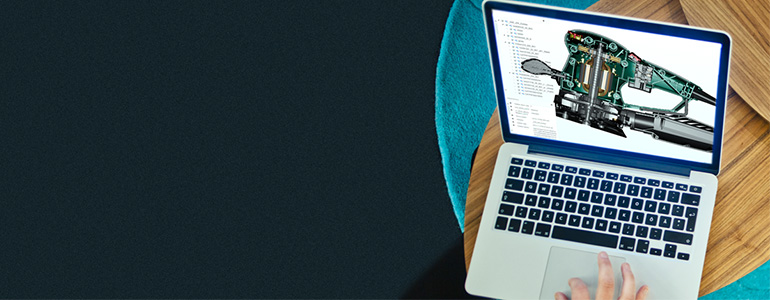
Resurrecting an Isolated Surface in CATIA using Formula Editor
Table of contents
Rebuild Formula in CATIA
Did you know that in CATIA, isolated/dumb geometries can actually be rebuilt? The following example will demonstrate the Formula Editor functionality within CATIA/ 3DEXPERIENCE, but the process is identical in CATIA V5. Dumb/isolated geometry in CATIA is denoted by the “red lightning” 
Isolated/dumb points, lines and circles (arcs) can easily be changed back to editable wireframe by simply double clicking on them in the tree. The default “type” in the point/line editor dialogue box will be “explicit”, however this can be changed in the dropdown box.

Unfortunately, surfaces and complex curves cannot be “revived” in such manor, users must utilize the formula editor.
An Example: Explained Step by step
The following example will be based on an extruded surface which has been intentionally isolated for the purpose of this article. The extruded surface has been defined from a Spline which was defined by four points:
Coordinates
The four points had the following coordinates:
| # | X (mm) | Y (mm) | Z (mm) |
| 1 | 0 | 0 | 50 |
| 2 | 50 | 100 | 50 |
| 3 | 60 | 140 | 50 |
| 4 | 200 | 80 | 50 |
Isolating Surface
The original surface, for the purpose of this example, has been isolated using the following method, thus making it “dumb”:
Editing the Formula
Once the geometry has been isolated, the user can resurrect it by right clicking on it > xxxx.object > Edit Formula:
In the formula editor dialogue box, under dictionary, the user can find Dictionary’s for various other geometry constructors:
For the purpose of this example, the following will be used:
Final Formula
The final formula used to rebuild this surface is as follows: extrude(spline(point(0mm,0mm,50mm),point(50mm,100mm,50mm),point(60mm,140mm,50mm), point(200mm,80mm,50mm)),direction(0mm,0mm,1mm),50mm,20mm,false)

The Above Formula is Split into Multiple Parts:
Definition for the Extrude:
extrude(spline(point(0mm,0mm,50mm),point(50mm,100mm,50mm),point(60mm,140mm,50mm), point(200mm,80mm,50mm)),direction(0mm,0mm,1mm),50mm,20mm,false) Where “direction(0mm,0mm,1mm)” defines the direction of the extrude to be in positive Z. Where “50mm” and “20mm” define limit 1 and limit 2 respectively. Where “false” does not reverse the direction.
Definition of the Spline:
extrude(spline(point(0mm,0mm,50mm),point(50mm,100mm,50mm),point(60mm,140mm,50mm), point(200mm,80mm,50mm)),direction(0mm,0mm,1mm),50mm,20mm,false)
Definition of the Points:
extrude(spline(point(0mm,0mm,50mm),point(50mm,100mm,50mm),point(60mm,140mm,50mm), point(200mm,80mm,50mm)),direction(0mm,0mm,1mm),50mm,20mm,false)
Discover more about CATIA.










